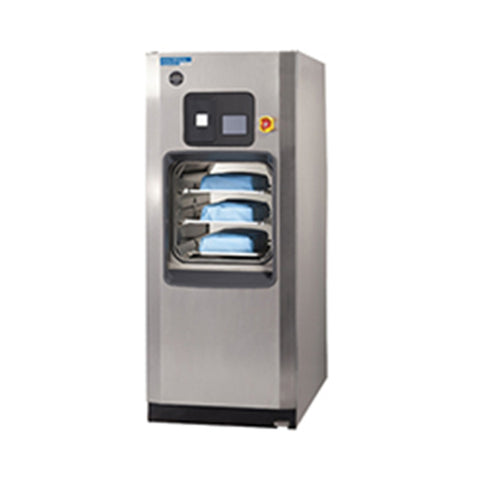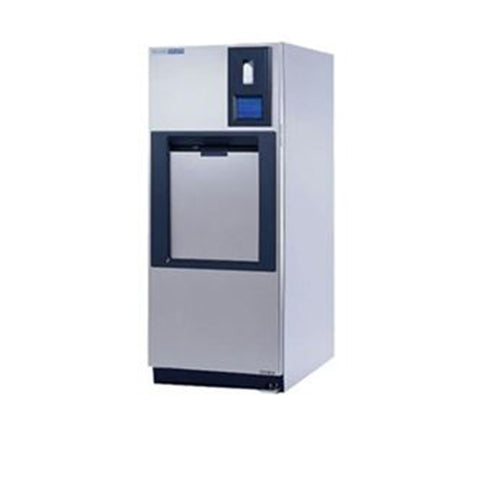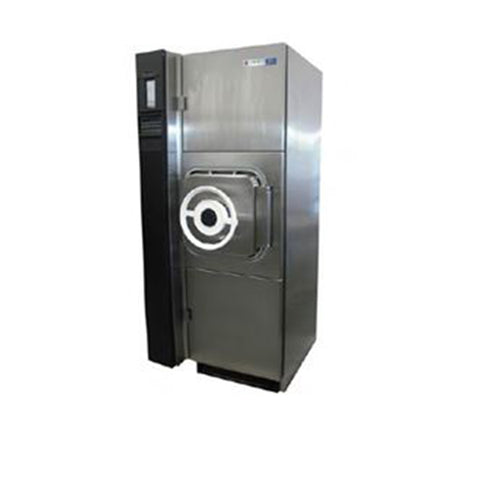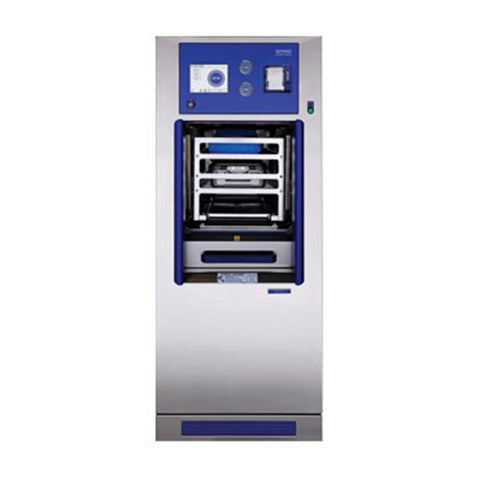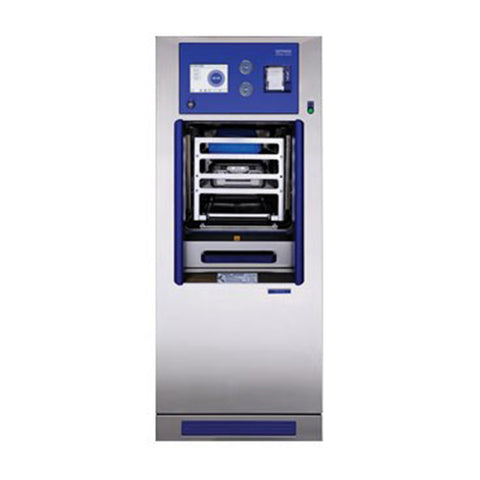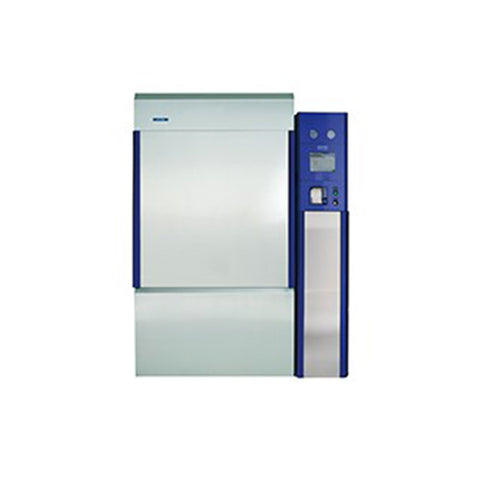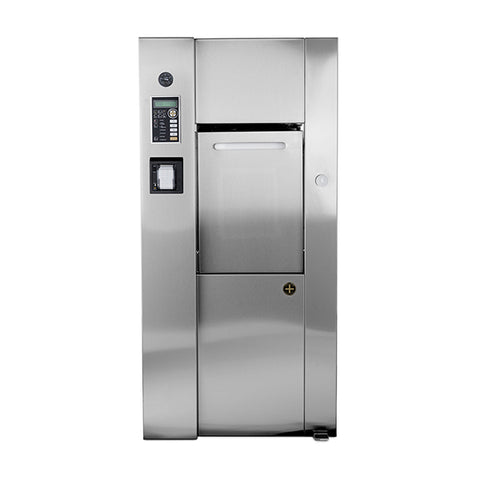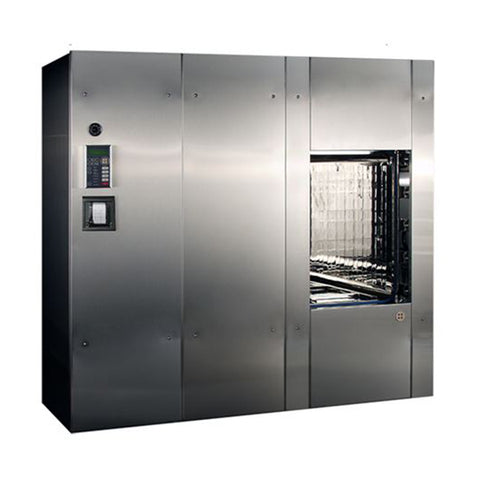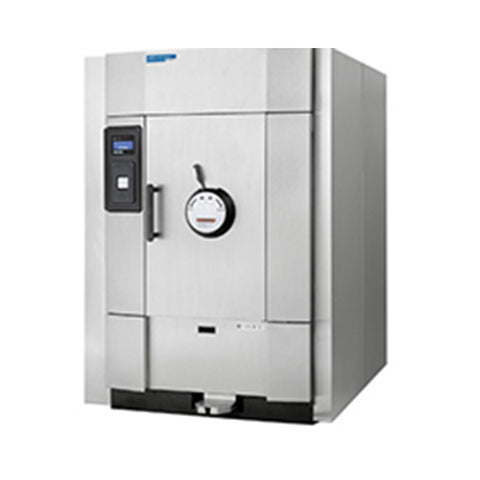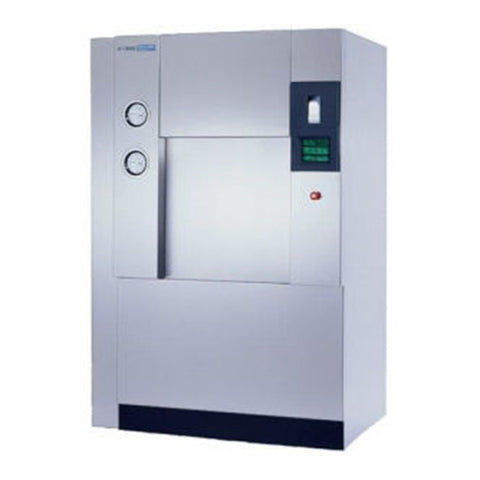Amsco Eagle 3000 Series Medium Sterilizer
Application
The AMSCO Eagle 3000 Series Medium Sterilizers feature an advanced microcomputer control system, providing the latest standard for cycle setup, selection, and monitoring. Once settings are made and the cycle started, microcomputers accurately monitor and control system operations. The control column includes an easy-to-read vacuum fluorescent display and an integral thermal printer. For efficient, high-volume processing of heat-and moisture-stable materials, such as fabrics, wrapped hard goods, glassware or animal bedding at 270˚ to 280˚F (132˚ – 138˚C) through prevacuum cycle. Prevacuum also provides gravity-type cycles.
Interior Chamber Dimensions
24 x 36 x 36" (610 x 914 x 914 mm)
24 x 36 x 48" (610x 914 x 1219 mm)
24 x 36 x 60" (610 x 914 x 1524 mm)
Technical Features
- Stage 3™ Control
- Cycle progress automatically through conditioning, sterilizing, exhaust (fast or, for liquids, adjustable-slow with accelerator) and drying phases.
- Control indicates cycle completion visually and also audibly for 90 seconds.
- At the end of a cycle, timers reset to the previously selected values, eliminating the need to reset values between repeated cycles.
- Timers also reset if sterilizer temperature drops 2° F (1.1 °C) below setpoint during the exposure phase.
- Control features programmed sterilize-temperature parameters that prevent inadvertent selection of cycles with improper sterilize-temperature settings.
- If an invalid sterilize-temperature is selected, a cycle cannot be started and a reference message is furnished.
- A vertical column, mounted on side opposite door hinge, houses the controls.
- Side-mounting makes controls easy to access and it removes them from exposure to the continuous heat, vapor, and condensate resulting from the sterilization process.
- Provides operator initiated automatic Vacuum Test and DART Bowie Dick Test Cycles.
- Vacuum Test checks the integrity of the piping system.
- DART (Bowie-Dick) Test assures that cycles meet air removal requirements for porous load processing.



